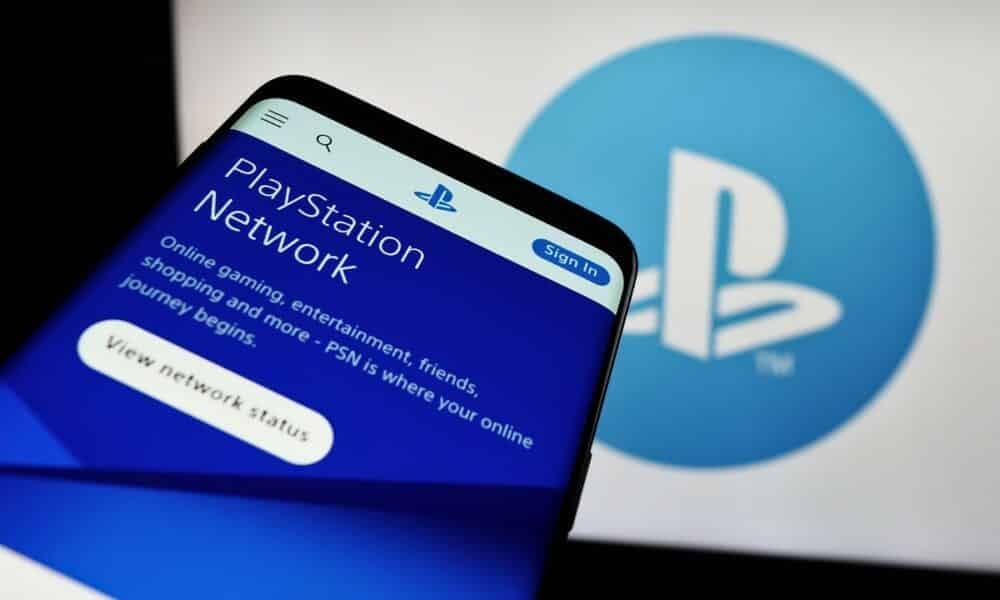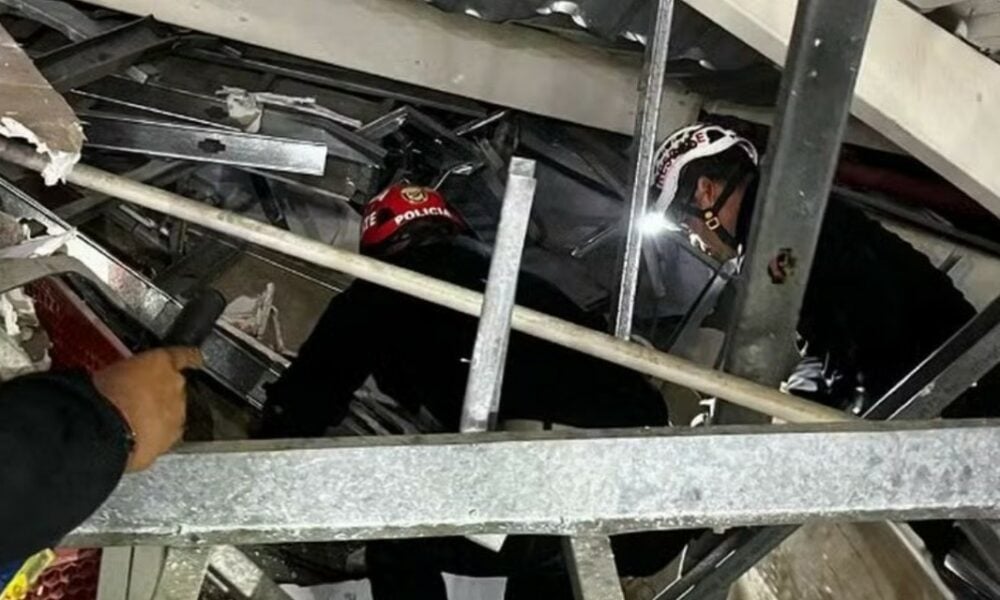PlayStation Network (PSN) goes down for 23 hours, affecting millions of players worldwide.
The PlayStation Network (PSN) has suffered a massive outage, leaving millions of users unable to access online services for 23 consecutive hours. The disruption began on February 7, 2025, at around 8:00 PM (Brasilia time) and has affected players across North America, Europe, Asia, and Latin America. In addition to being unable to access multiplayer modes, users have been locked out of PlayStation Store purchases, PSN account logins, and even digital games that require online authentication. Within minutes of the outage, social media and gaming forums were flooded with complaints from users who found themselves unable to log into their accounts or play their favorite games.
Sony acknowledged the issue through its official channels, stating that teams were working to resolve the problem, but without providing a definitive timeframe for service restoration. As the downtime stretched to nearly an entire day, player frustration grew, sparking a wave of criticism against the company. The lack of detailed information about the cause of the outage and the prolonged recovery time led many users to question the reliability of PlayStation Network and the stability of its servers.
PlayStation Network Has Been Down For 24 Hours But Seems To Be Slowly Coming Back Online [Update]https://t.co/U93uHlDYu0
— Jams&Joysticks (@JamsJoysticks) February 8, 2025
The outage affected multiple PSN functionalities, leaving PlayStation Plus subscribers unable to access online gaming. The inability to access the PlayStation Store also prevented transactions and digital content redemptions. Many players who own digital copies of games struggled to launch them, as PSN requires an active connection for license authentication.
Services Affected and Key Player Impacts
The PSN downtime has caused disruptions across several critical areas for users. The most significant issues reported include:
- Account authentication and login failures: Users were unable to access their PSN profiles, receiving error messages when attempting to log in.
- Multiplayer mode unavailable: Online games such as Call of Duty: Warzone, Fortnite, FIFA 24, and Gran Turismo 7 were inaccessible.
- Digital game authentication errors: Titles purchased digitally could not be launched due to failed license verification.
- PlayStation Store offline: Sony’s digital storefront was down, preventing new game purchases and DLC downloads.
- Streaming app disruptions: Services like Netflix, YouTube, and Spotify, which require PSN authentication, also experienced issues.
- Game server outages: Developers relying on PSN servers to host online services reported connectivity failures.
The severity of the issue has fueled frustration within the gaming community, with many players demanding a more detailed response from Sony regarding the root cause of the failure.
Player Reactions and Criticism Toward Sony
With PSN down for 23 hours, many players have taken to social media to express their dissatisfaction with Sony’s handling of the situation. The most common complaints include:
- Lack of transparency from Sony: Players are frustrated with the absence of clear updates about the cause of the outage and the expected recovery time.
- Impact on PlayStation Plus subscribers: Paying users of Sony’s premium service are demanding compensation for being unable to access online features.
- Offline gaming limitations: The requirement for digital games to verify licenses online has reignited debates about the need for an alternative offline mode.
The delay in communication and lack of concrete details from Sony have only intensified criticism, with many questioning the stability and preparedness of PSN.
History of PlayStation Network Outages
PSN has suffered multiple large-scale disruptions in the past, the most severe being the 2011 hacking attack. That incident resulted in a 23-day shutdown, affecting 77 million user accounts and leading to one of the biggest security breaches in gaming history. Following the attack, Sony strengthened its security systems, but periodic outages continue to occur.
Some of the most notable PSN outages in recent years include:
- 2020: A surge in traffic during the PlayStation 5 launch caused widespread PSN disruptions.
- 2022: A global outage lasted for six hours, preventing users from logging in or accessing multiplayer features.
- 2023: A 12-hour PSN failure raised concerns about the network’s server infrastructure.
Despite technological advancements, PSN remains vulnerable to disruptions, highlighting the need for more effective preventive measures.
Possible Causes of the Outage and Future Prevention Measures
Sony has yet to disclose the exact cause of the outage, but experts speculate the following possibilities:
- Server overload: A sudden spike in user activity may have overwhelmed the system, leading to instability.
- Cyberattack: Given PSN’s history of hacking incidents, a new attack cannot be ruled out.
- Internal technical failure: Server malfunctions or software bugs may have triggered the disruption.
To prevent similar failures in the future, several potential solutions could be implemented:
- Server infrastructure improvements: Investing in more robust servers could help mitigate the risk of prolonged outages.
- Offline authentication system: Allowing users to access their digital games without needing constant PSN verification.
- More transparent communication with users: Providing real-time updates about service status and recovery efforts to reduce frustration.
Sony has yet to confirm whether it will offer compensation to affected users.
PSN’s Record Downtime and Expectations for Service Restoration
With PSN down for 23 hours, this outage has become one of the longest in the network’s recent history. The extended period without access has significantly impacted millions of players, reigniting discussions about PlayStation Network’s reliability and infrastructure.
Users continue to await updates from Sony and hope for a permanent resolution to the issue. Meanwhile, the gaming community remains vigilant, monitoring the situation and pushing for measures to prevent future service failures.

The PlayStation Network (PSN) has suffered a massive outage, leaving millions of users unable to access online services for 23 consecutive hours. The disruption began on February 7, 2025, at around 8:00 PM (Brasilia time) and has affected players across North America, Europe, Asia, and Latin America. In addition to being unable to access multiplayer modes, users have been locked out of PlayStation Store purchases, PSN account logins, and even digital games that require online authentication. Within minutes of the outage, social media and gaming forums were flooded with complaints from users who found themselves unable to log into their accounts or play their favorite games.
Sony acknowledged the issue through its official channels, stating that teams were working to resolve the problem, but without providing a definitive timeframe for service restoration. As the downtime stretched to nearly an entire day, player frustration grew, sparking a wave of criticism against the company. The lack of detailed information about the cause of the outage and the prolonged recovery time led many users to question the reliability of PlayStation Network and the stability of its servers.
PlayStation Network Has Been Down For 24 Hours But Seems To Be Slowly Coming Back Online [Update]https://t.co/U93uHlDYu0
— Jams&Joysticks (@JamsJoysticks) February 8, 2025
The outage affected multiple PSN functionalities, leaving PlayStation Plus subscribers unable to access online gaming. The inability to access the PlayStation Store also prevented transactions and digital content redemptions. Many players who own digital copies of games struggled to launch them, as PSN requires an active connection for license authentication.
Services Affected and Key Player Impacts
The PSN downtime has caused disruptions across several critical areas for users. The most significant issues reported include:
- Account authentication and login failures: Users were unable to access their PSN profiles, receiving error messages when attempting to log in.
- Multiplayer mode unavailable: Online games such as Call of Duty: Warzone, Fortnite, FIFA 24, and Gran Turismo 7 were inaccessible.
- Digital game authentication errors: Titles purchased digitally could not be launched due to failed license verification.
- PlayStation Store offline: Sony’s digital storefront was down, preventing new game purchases and DLC downloads.
- Streaming app disruptions: Services like Netflix, YouTube, and Spotify, which require PSN authentication, also experienced issues.
- Game server outages: Developers relying on PSN servers to host online services reported connectivity failures.
The severity of the issue has fueled frustration within the gaming community, with many players demanding a more detailed response from Sony regarding the root cause of the failure.
Player Reactions and Criticism Toward Sony
With PSN down for 23 hours, many players have taken to social media to express their dissatisfaction with Sony’s handling of the situation. The most common complaints include:
- Lack of transparency from Sony: Players are frustrated with the absence of clear updates about the cause of the outage and the expected recovery time.
- Impact on PlayStation Plus subscribers: Paying users of Sony’s premium service are demanding compensation for being unable to access online features.
- Offline gaming limitations: The requirement for digital games to verify licenses online has reignited debates about the need for an alternative offline mode.
The delay in communication and lack of concrete details from Sony have only intensified criticism, with many questioning the stability and preparedness of PSN.
History of PlayStation Network Outages
PSN has suffered multiple large-scale disruptions in the past, the most severe being the 2011 hacking attack. That incident resulted in a 23-day shutdown, affecting 77 million user accounts and leading to one of the biggest security breaches in gaming history. Following the attack, Sony strengthened its security systems, but periodic outages continue to occur.
Some of the most notable PSN outages in recent years include:
- 2020: A surge in traffic during the PlayStation 5 launch caused widespread PSN disruptions.
- 2022: A global outage lasted for six hours, preventing users from logging in or accessing multiplayer features.
- 2023: A 12-hour PSN failure raised concerns about the network’s server infrastructure.
Despite technological advancements, PSN remains vulnerable to disruptions, highlighting the need for more effective preventive measures.
Possible Causes of the Outage and Future Prevention Measures
Sony has yet to disclose the exact cause of the outage, but experts speculate the following possibilities:
- Server overload: A sudden spike in user activity may have overwhelmed the system, leading to instability.
- Cyberattack: Given PSN’s history of hacking incidents, a new attack cannot be ruled out.
- Internal technical failure: Server malfunctions or software bugs may have triggered the disruption.
To prevent similar failures in the future, several potential solutions could be implemented:
- Server infrastructure improvements: Investing in more robust servers could help mitigate the risk of prolonged outages.
- Offline authentication system: Allowing users to access their digital games without needing constant PSN verification.
- More transparent communication with users: Providing real-time updates about service status and recovery efforts to reduce frustration.
Sony has yet to confirm whether it will offer compensation to affected users.
PSN’s Record Downtime and Expectations for Service Restoration
With PSN down for 23 hours, this outage has become one of the longest in the network’s recent history. The extended period without access has significantly impacted millions of players, reigniting discussions about PlayStation Network’s reliability and infrastructure.
Users continue to await updates from Sony and hope for a permanent resolution to the issue. Meanwhile, the gaming community remains vigilant, monitoring the situation and pushing for measures to prevent future service failures.










Post Comment